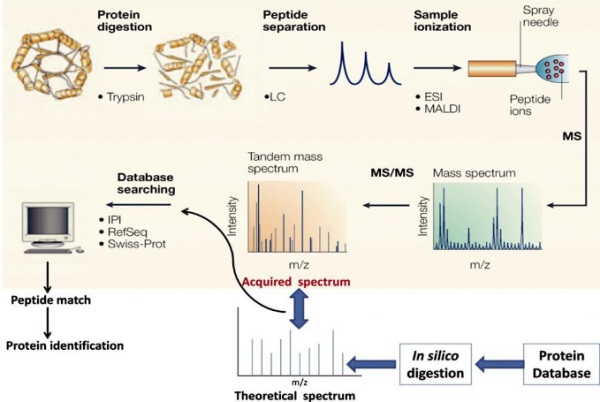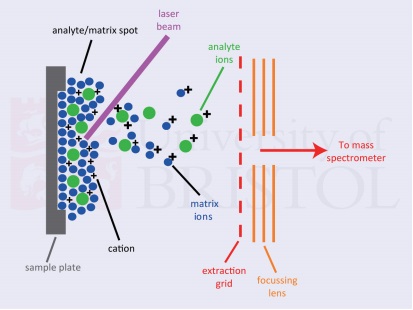

Protein is the most abundant and functionally important biological macromolecule in an organism. It exists in all biological cells and serves as one of the material foundations of life. Proteins catalyze various reactions in the living body, regulate metabolism, and resist foreign material invasion. And control of genetic information plays a vital role, so protein is also an extremely important research object in the life sciences.
Modern research results show that more and more peptides have biological functions like proteins, and the establishment of peptide libraries with special and efficient biofunctional peptides is one of the research hotspots. Therefore, high efficiency and high sensitivity peptide and protein sequencing methods are required to support the conduct of these studies. Existing peptide and protein sequencing methods include chemical methods Edman method, C-terminal enzymatic hydrolysis method, C-terminal chemical degradation method, etc., which have N-terminal sequence determination, and these methods have some defects. For example, the N-terminal amino acid phenyl isothiocyanate PITC method, which is a standard method for peptide and protein sequence determination, has a slower sequencing rate and a low throughput; a larger sample amount requires a higher purity of the sample; Will be wrongly identified and so on. The C-terminal chemical degradation sequencing method still faces great difficulties in its development due to the inability to find an ideal chemical probe such as PITC. In this context, Mass spectrometer has been widely used by scientists due to its relatively high sensitivity, accuracy, ease of operation, rapidity and good universality.


The protein's primary structural amino acid sequence, which matches its protein by identifying amino acid sequences, is a qualitative study and the basis for proteomics research. Nowadays, the basic research method of proteomics is: using biological mass spectrometry as the core, large-scale, high-throughput separation, identification and analysis of proteins. Modern mass spectrometry generally consists of an ion source (Ion source), a mass analyzer (Mass analyzer) and an ion detector (Detector).
In simple protein samples, such as two-dimensional gel (2D gel) protein spots, single-dimensional gel (1D gel) cut protein bands (Band) and purified proteins, etc., ion source can be selected for electrospray ionization (ESI). Or mass spectrometry using Matrix-Assisted Laser Desorption/Ionization (MALDI) for identification. The ESI principle is to apply an electric field to the top of the nebulizer to provide a net charge to the droplet. Under high electric field, the surface of the droplet generates high electrical stress, causing the surface to be destroyed to produce droplets. The evaporation of the solvent in the charged droplets, the ions on the surface of the droplets "evaporate" into the gas phase and enter the mass spectrometer. The principle of MALDI is to use a laser to illuminate a eutectic film formed by a sample and a matrix. The matrix absorbs energy from the laser and transmits it to the biomolecule. During the ionization process, the proton is transferred to or obtained from the biomolecule, and the biomolecule is ionized. process.


1. If you choose MALDI-TOFTOF for protein identification, how many samples do you need to provide?
If it is a 2D glue point or a strip, it can guarantee a good success rate as long as it is visible to the naked eye. Or to provide more than 200 fmol (or about 10 ng of protein around 50 kDa) identification success rate is also very high. If it is a solution or a lyophilized sample, the protein content needs to be at least 100 ng.
2. When protein glue spots are identified, 2-DE is dyed by silver staining. Which silver dye reagents will affect the subsequent mass spectrometry identification?
Do not use glutaraldehyde in silver staining reagents because it will modify the protein, which will affect subsequent protein identification. This staining method is described in the silver staining method compatible with mass spectrometry.
3. How to reduce the pollution of keratin?
The contamination of keratin is mainly from hair and dander, so gloves and headgear should be worn during the experiment and cutting process.
4. Do the glue points need to be merged?
For the test sample, only one glue spot can be seen by the naked eye. Silver stained samples are recommended to combine 4 separate points, but in general we recommend silver dye samples
Identification by LC-MSMS.
5. What about the sample storage time?
We recommend that freshly prepared samples be immediately identified by mass spectrometry. Silver stained samples should not be stored for more than 2 months, and test samples can be stored for more than a few months, but it is best not to exceed 6 months.
6. Accept samples that have been digested? In addition to the Trypsin enzyme, will other enzymes be used for enzymatic hydrolysis?
We do not accept samples that have been hydrolyzed because we have strict enzymatic QC control inside and we need to operate the enzymatic hydrolysis. In general, we will choose a single Trypsin for enzymatic hydrolysis. If you need other enzymes for enzymatic hydrolysis, please contact us in advance.
7. How to identify small molecular weight proteins?
Generally, if the molecular weight range is above 20kDa, we recommend using MALDI-TOFTOF for identification; if it is below 20kDa, we recommend using
Identification by LC-MSMS.
8. Sample delivery problem?
The glue dot or strip sample is placed directly into the 1.5mL EP tube (EP is best for import. If there is no import, please contact us, we will send the imported EP tube for free), write the sample number in the tube cover, and do not need to add the tube. For any liquid, fill in the sample rating table and send it at room temperature. Other purified or lyophilized samples can be sent at room temperature if they are stable at room temperature, and dry ice is recommended if unstable.
9. Compared with the two-way protein map that was run out, it was found that the molecular weight or isoelectric point of some proteins with the highest scores did not correspond to the map, and the difference was large. In this case, how to judge a glue point? Which of the several or even a dozen point proteins given in the paper has the highest degree of credibility?
Protein mass spectrometry is identified by peptides to proteins, so some of the identified proteins may be homologous proteins of the target protein or a subunit of the protein, and the artificial or natural modification or degradation of the protein may affect the presence of the protein. The position in the glue map. In general, the higher the Mascot identification score, the higher the credibility. Secondly, the high-reliability protein can be screened by combining molecular weight, isoelectric point, and peptide coverage.
Medical Cold Patch
Throat Pain Relief Patch
[Name] Medical Cold Patch
[Package Dimension] 36 round pieces
The pain relief patch is composed of three layers, namely, backing lining, middle gel and protective film. It is free from pharmacological, immunological or metabolic ingredients.
[Scope of Application] For cold physiotherapy, closed soft tissue only.
[Indications]
The patches give fast acting pain relief for acute and chronic tonsillitis.
[How To Use a Patch]
Please follow the Schematic Diagram. One piece, one time.
The curing effect of each piece can last for 6-8 hours.
[Attention]
Do not apply the patch on the problematic skin, such as wounds, eczema, dermatitis,or in the eyes. People allergic to herbs and the pregnant are advised not to use the medication. If swelling or irritation occurs, please stop using and if any of these effects persist or worsen.notify your doctor or pharmacist promptly. Children using the patch must be supervised by adults.
[Storage Conditions] Store below 30c in a dry place away from heat and direct sunlight.
Throat Pain Relief Patch,Throat Pain Relief Pad,Throat Pain Relief Plaster,Antitussive Patch
Shandong XiJieYiTong International Trade Co.,Ltd. , https://www.xijieyitongpatches.com